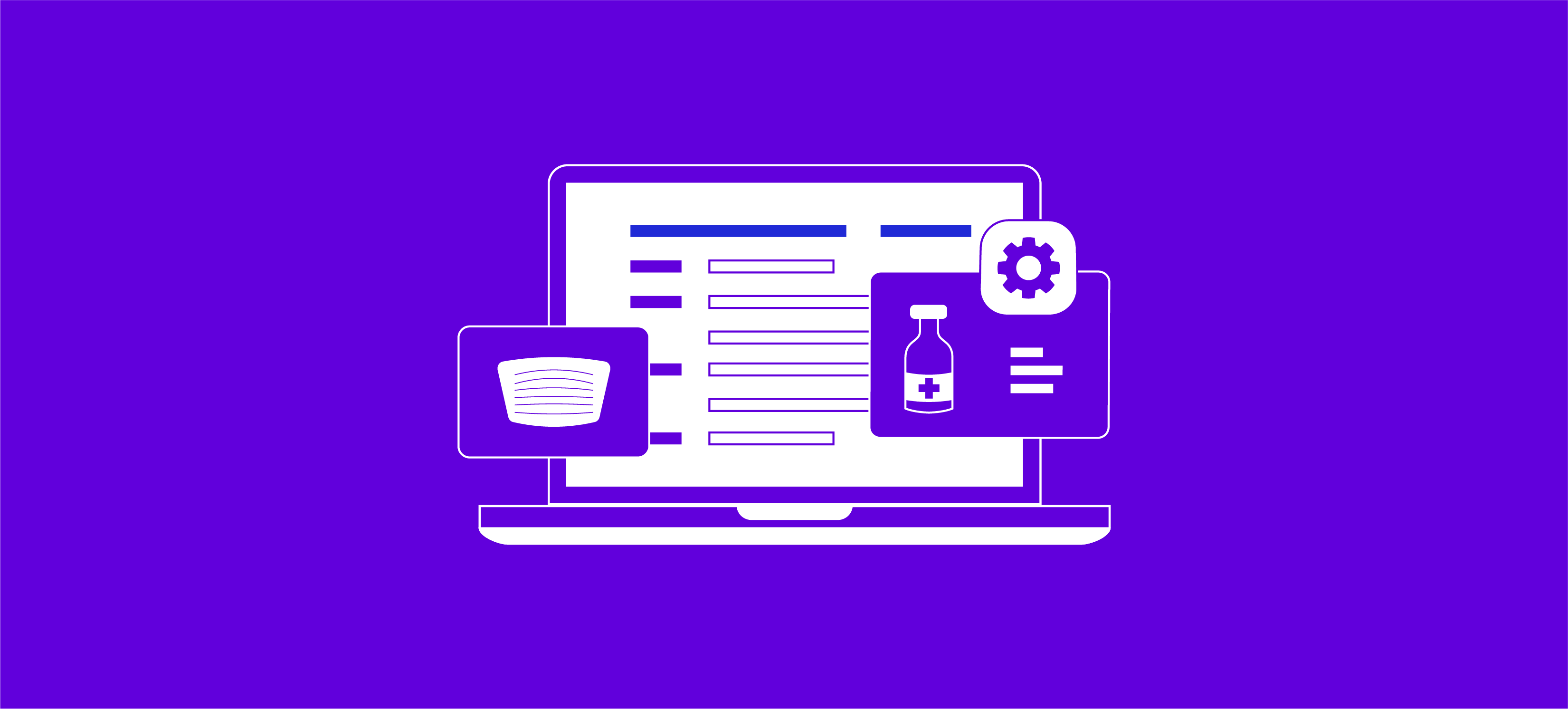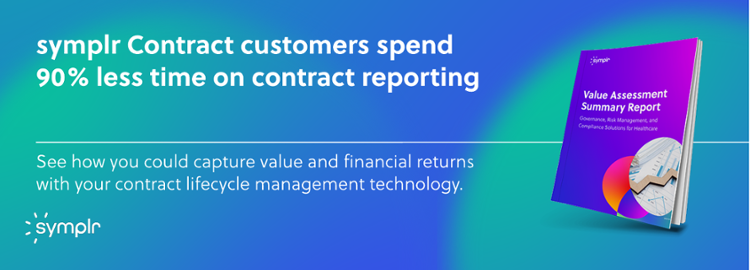Healthcare Contract Management, e-Signature Pair to Master Data Efficiency

The healthcare industry remains one of the most complex fields in the modern marketplace. This is due in part to rising costs, increasing regulatory requirements, an imbalance of provider-to-patient needs, and a surging demand for a patient-focused care experience.
One way that healthcare organizations seek to meet these challenges is by better defining and governing their business obligations. This requires more effective ways to process healthcare operations data and manage their contracts with suppliers, healthcare providers, and others, all while ensuring compliance with state and federal regulations. Perhaps the most promising solution is the implementation of cutting-edge, healthcare-specific contract management software. When paired with e-signature protocols, the contract management process can help provider organizations optimize data efficiency.
Below, we provide the basics of contract management and outline best practices for making e-signatures part of your hospital or health system’s contract management protocols. We also discuss some great examples of e-signature use in healthcare settings.
What is contract management for healthcare organizations?
Contracts are vital documents in the healthcare industry. The typical healthcare organization has hundreds or even thousands of contracts with individuals, partner organizations, vendors, and more. Managing them all for maximum return is incredibly challenging, particularly when the organization strives to achieve transparency and collaboration among stakeholders throughout each contract’s lifecycle for improved productivity and accountability.
Effective contract management supports health systems in their efforts to:
- Mitigate risks and avoid penalties: Successful contract management is linked with sound risk management and accreditation and regulatory compliance. Anomalies in contract referrals, vendor relationships, and the like can cost an organization thousands of dollars in fines and lost reimbursement from payers and other entities.
- Gain visibility into contract assets: The contracts process is a maze of approvals that starts with pre-contract phases. Post-signature, contract management still requires significant resources and attention to ensure that the organization benefits from the contract terms.
- Understand the impact of contract obligations: Although a great number of hospital staff enterprise wide may never participate in the contracts management process, their day-to-day work must adhere to parameters governed by contracts. As a result, staff must be informed of new contracts, changes to existing contracts, and updates to affected policies (e.g., medical supply, billing, etc.).
A healthcare contract management software system is a solution designed to help medical organizations track and manage contracts and associated documents and data. A comprehensive program will allow healthcare organizations to create, route, review, and approve contracts all within a single solution. Built-in compliance and workflow mechanisms enable a holistic approach to contract management, while reducing financial waste and improving efficiencies.
Part of that workflow is incorporating e-signature to enhance the patient experience, as well as to streamline negotiation processes with business partners, vendors, and suppliers. E-signature has the ability to cut days or weeks off the time required to secure a signature—and when working with payers such as Medicare or Medicaid, that reduction translates to faster reimbursement.
Contract management software with analytics and automated processes
From the largest health systems to standalone hospitals, most healthcare organizations realize the value in unifying and standardizing contracts to optimize efficiencies and insights. Achieving these goals is a near-impossible mission, however, without the ability to centralize contracts into a single source of truth that manages the organization’s entire ecosystem of agreements.
Technology and software such as artificial intelligence makes it possible to comb through tens of thousands of contracts to gain insights for better decision making. Simply put, the software’s contract analytics see what the human eye can’t. Automation, too, comes into play in successful contract management because it ensures that each contract undergoes the appropriate steps so that the right individuals or teams remain apprised of the contract's existence, consequences, and more.
Spend management isn't the same as contract management, but the two are related because spend management can help healthcare organizations uncover untapped savings in their existing, pending, or future contracts. Analytics are applied here, too, to track contract spend over time, pinpoint savings opportunities, and prioritize and measure progress to goals. Applying benchmarking and due diligence before signing a contract ensures greater cost containment/reduced operating expenses, eliminates wasted resources, and shores up regulatory compliance. All of these goals are prerequisites to achieving a connected healthcare enterprise.
For which healthcare contract types can
e-signature be used?
Many types of healthcare contracts can incorporate the use of e-signature. A few examples include:
- Physician employment contracts
- Physician recruitment contracts
- Managed services contracts
- Medical director contracts
- Care transfer agreements
- Medical technology usage agreements
- Compensation and benefits documents
- Joint venture contracts
- Equipment agreements
While all of the contract types above can utilize e-signatures, some still rely on physical document-signing protocols. For instance, equipment contracts are long-term leases that allow facilities to avoid buying brand new equipment. Generally, equipment providers use paper documents instead of e-signatures.
Examples of e-signature in healthcare contract management
Before implementing healthcare contract management and e-signature software, it’s important to understand just how versatile these solutions are. E-signatures can expedite the signature process on the contract or business agreement itself, or facilitate faster acceptance of supporting healthcare documentation, including:
- Hospital forms
- Patient onboarding forms
- Billing forms
- Patient consent documents
- Health insurance claims forms
- Medical prescriptions
- Lab reports
- Care forms
The ability to digitize various documents can dramatically improve the efficiency of a healthcare organization’s operation spanning the governance, risk management, compliance, and workforce sectors. In addition to enhancing the patient experience, it can improve the experience for the organization’s business partners, vendors, and suppliers.
Leading practices for using e-signature
Due to constraints of federal regulations like HIPAA and the Electronic Signatures in Global and National Commerce Act (ESIGN Act), an e-signature policy must be implemented with care. To help you avoid making some of the common errors healthcare organizations make when they initially introduce e-signature protocols, we’ve outlined several leading practices here.
Display the terms clearly: As you’re instituting your e-signature policy, ensure all relevant terms are displayed to the entity that is going to issue the signature. Courts may penalize parties that make binding contracts intentionally hard to read. If the contract results in a legal dispute between your organization and the signee, you want to make sure that it is enforceable.
As a general rule, you should avoid displaying the document in a small window that only displays a few lines of content at a time. Instead, you should present the content in a large window and a font of a reasonable size.
Demonstrate consent: The e-signature process should also demonstrate that the signee/patient is aware that they are consenting to a specific matter or issue. E-signing must require the signee to take some distinct action. This can be something as simple as checking a box or signing with their fingertip. However, it should not include a generic button labeled with the phrase “Next” or “Continue.”
In addition, you must advise the signee of the results of their signature. This language should be placed near the e-signature and can include a statement such as “by signing this document, you agree to...”
Provide an email or print option: According to the ESIGN Act and the Uniform Electronic Transactions Act (UETA), all signing parties must be able to retrieve electronic records. The easiest way to satisfy this requirement is to provide signing parties with the option to print the documents or have a copy emailed to themselves.
If you fail to make a record of the contract retrievable, then the terms will not be enforceable. That would make settling any legal disputes regarding the e-signed contracts virtually impossible.
Keep records: Obtaining consent via e-signatures is an extremely efficient data and contract management protocol—as long as you keep thorough records of it. Document the time, date, and method of user identification, and identify users by name, username, or email address. In addition, document which version of the form the entity signed. This will be essential as you may update your contract forms in the future.
Verify the signer's identity: Due to the nature of e-signatures, it is essential that you take the time to verify the signer's identity. This can help you to avoid disputes about whether the individual that entered the agreement had the authority to make a commitment or not.
The simplest way to verify identity is to implement authentication via a username and a password. You could also use two-factor authentication, which is a more secure verification. Using this strategy, the signee must provide a username and password. In addition, they must input a temporary code that is sent to their email address or phone.
Consider applicable laws: When implementing e-signature with your healthcare contract management solution, consult with your legal team. They will ensure that your new protocols adhere to the necessary regulations.
FAQs
What does a healthcare contract manager do?
A healthcare contract manager is responsible for shepherding contracts and the associated data and documents through the entire contract process, from due diligence pre-contract to the post-signature stage(s). They collaborate with the external, contracted third-party organizations—as well as with internal departments and individuals—to keep the process on schedule, on budget, and on the appropriate parties’ radar. Their communication responsibilities extend to new contracts, expiring contracts, changes to existing contracts, and any and all resulting updates to supply chain, regulatory, medical/clinical, or other policies and protocols.
What are healthcare contracts?
Some of the major types follow:
- Payer contracts
- Managed care contracts
- Physician employment and recruitment contracts
- Supply chain and capital equipment contracts
- Technology and software licenses
- Executive compensation
- Employee benefits arrangements
- Joint ventures
- Purchased services agreements
- Real estate and building rental contracts
- Equipment sales and leases
What are the stages of contract management?
There are five primary stages of healthcare contract management: the initial request, agreement review, corrections, approvals, and final document storage. It's vital to carefully follow a structured process, aided by contract management automation, to avoid errors in the contracting process.
What’s the difference between contract management and spend management?
Spend management isn’t the same as contract management, but the two are related. Spend management can help healthcare organizations uncover untapped savings in their existing, pending, or future contracts under consideration.
With the help of symplr’s contract management solutions, your organization can mitigate risks, gain visibility into contract assets, employ the use of e-signature, and better understand the impact of your contractual obligations.

